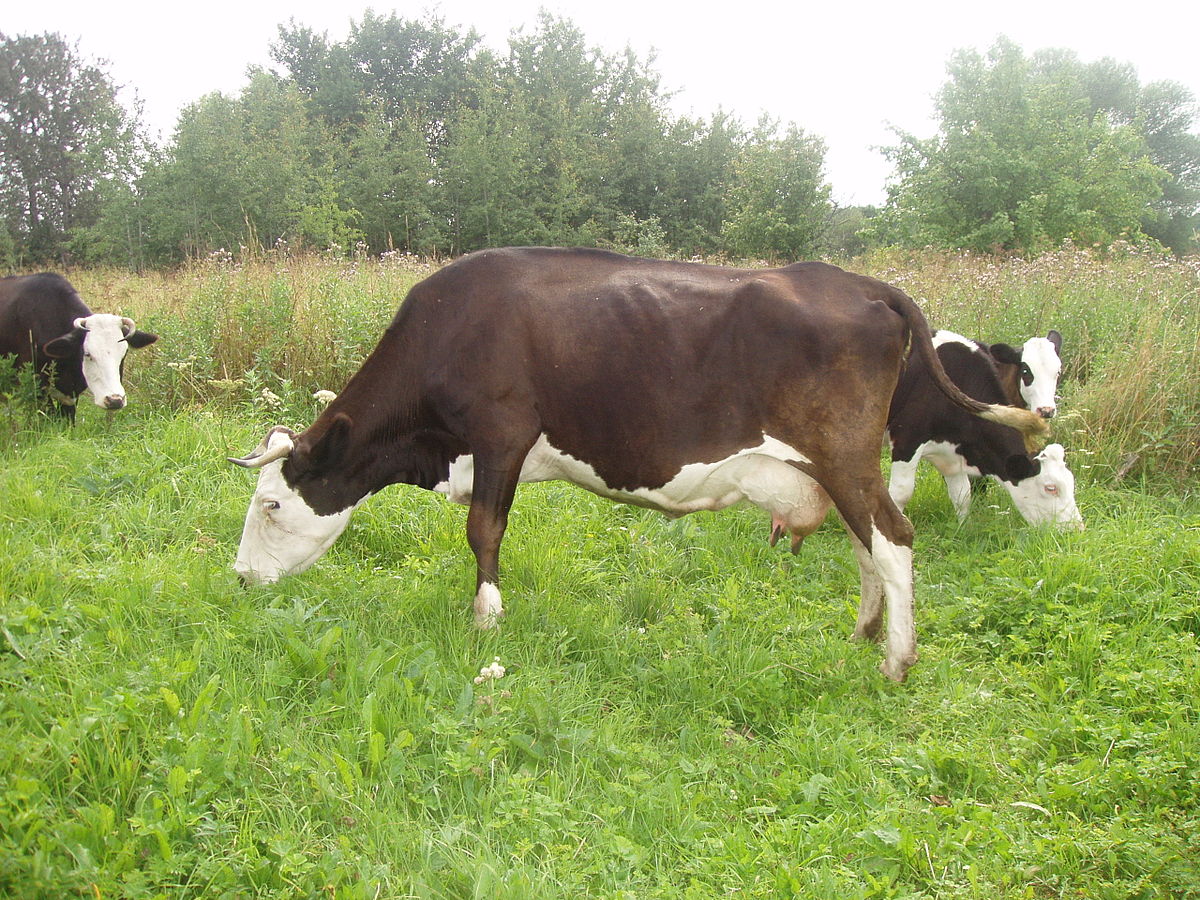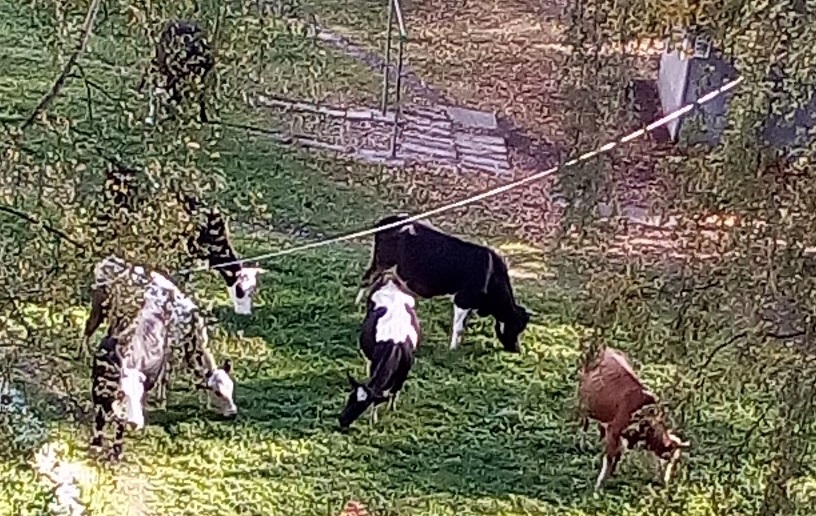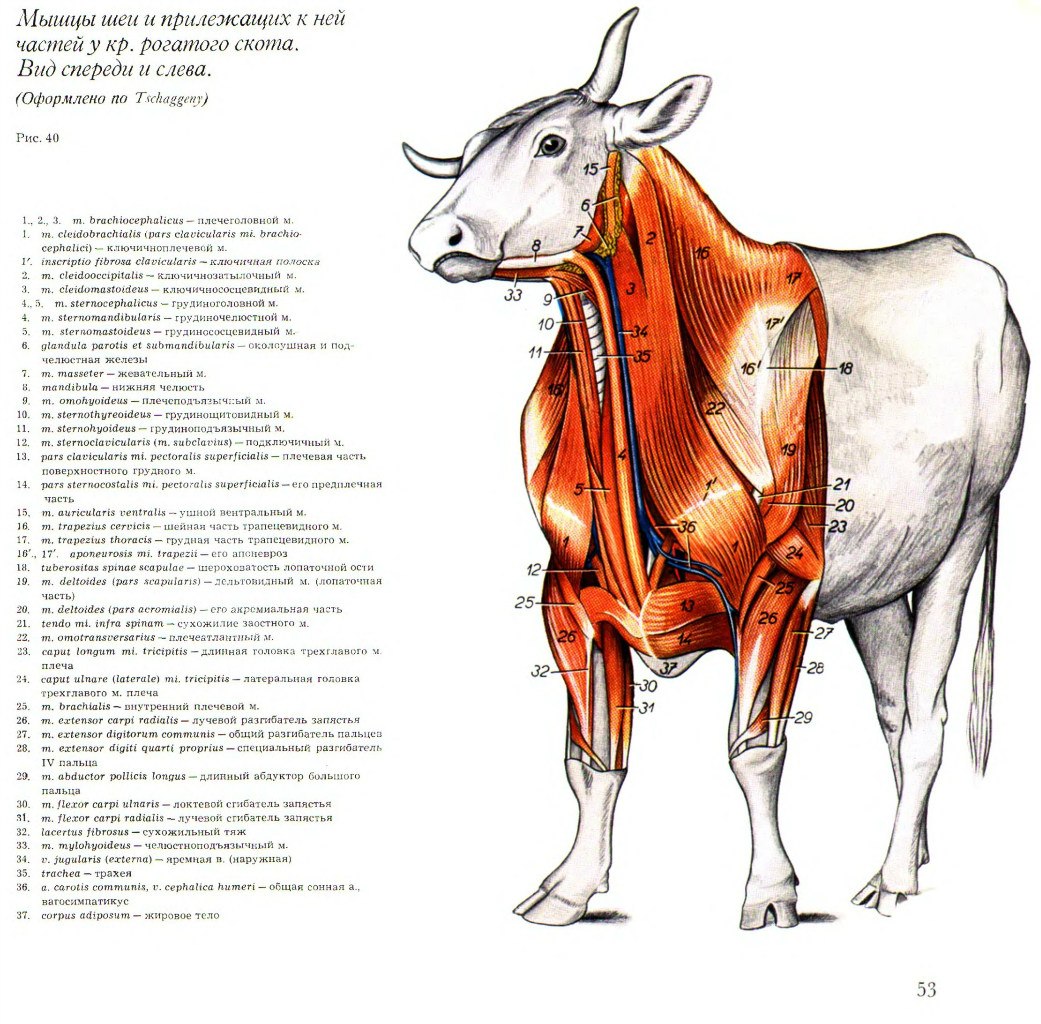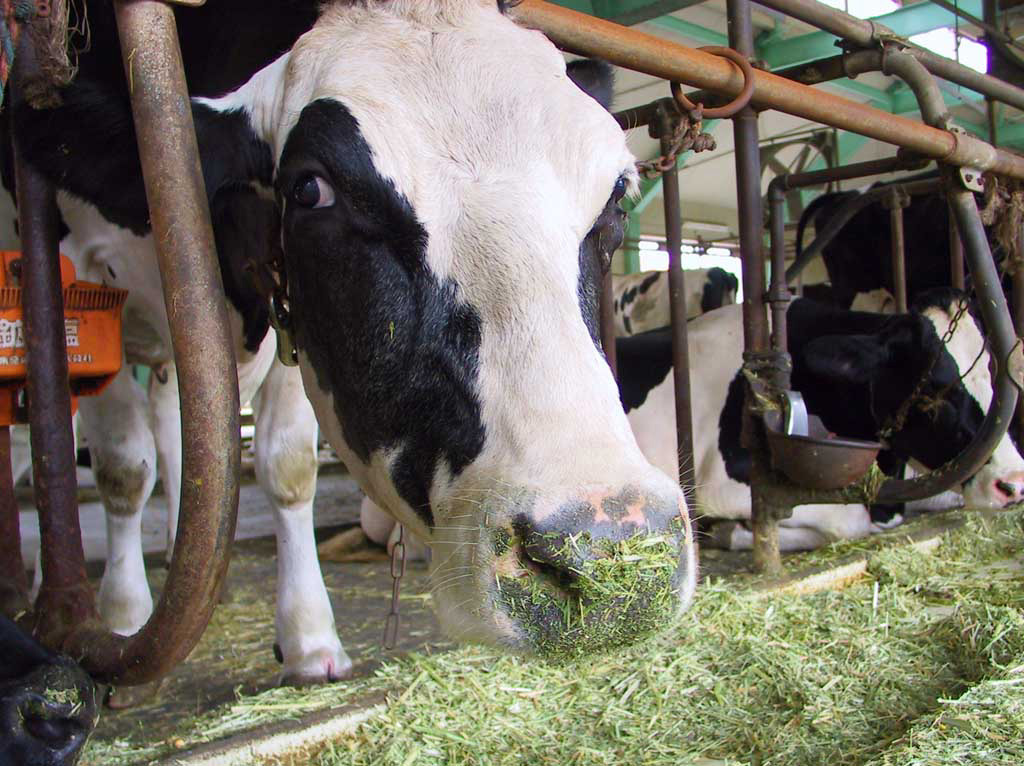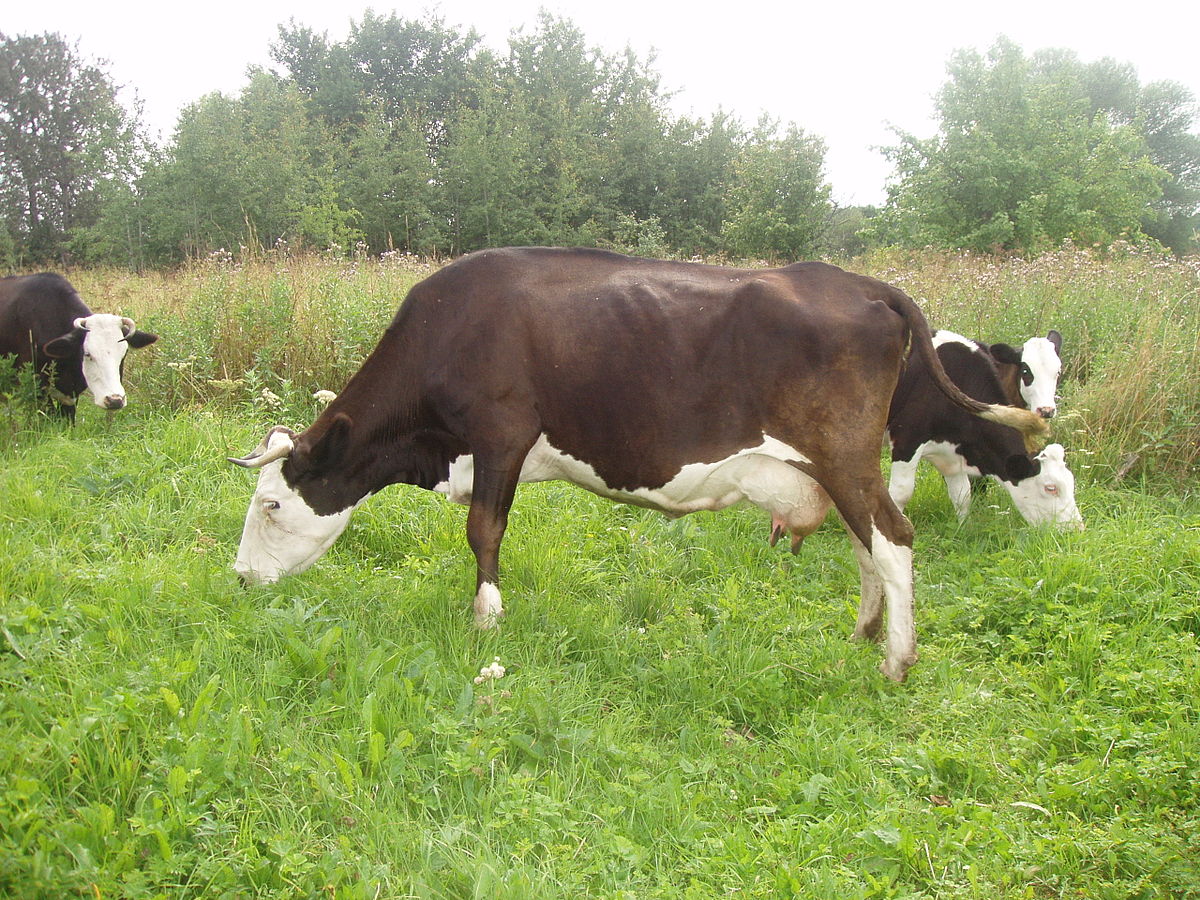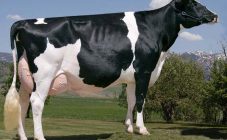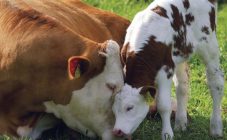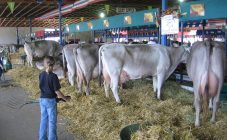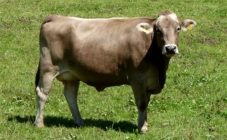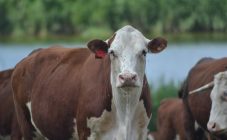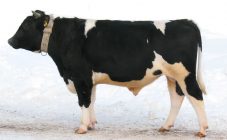Content:
Getting high quality milk is one of the main reasons why farmers prefer this breed. The Yaroslavl breed of cows is widely known in Russia for its high milk yield, as well as tasty and healthy milk. These cows are almost never used to get meat.
Description of the Yaroslavl breed
The history of this breed is as follows. It was bred on the territory of Yaroslavl and its region in the 19th century. The cows were bred in the floodplains of the Volga, Sheksna and Mologa. One of the reasons for the work on breeding the breed was the increased demand in the main cities of the country for meat products. In addition, at this time there was a vigorous growth of the cheese-making and butter-making industries.
Breed selection was carried out mainly by dairy associations. At the same time, there was a careful selection of cattle of the northern Great Russian breed. In the future, it was on the basis of these animals that the development of the Yaroslavl breed took place.
At the initial stage, the best specimens were chosen, first of all, in appearance. After that, we moved on to work on improving milk yield and milk fat content.
At the beginning of the new, 20th century, the Yaroslavl breed of cows began to gain more and more popularity. At the same time, they began to increasingly use it on the territory of neighboring provinces. During this century, breeding work to improve this breed continued.
In 1937-1938, for a short time, crossing was carried out with bulls of the Ostfriesian breed. In the eighties, crossing was carried out with the Holstein breed. Later, the Mikhailovsky variant of the Yaroslavl breed was obtained, which is now considered one of the best.
In 1985, there were 802 thousand head of cattle of this breed throughout the Russian Federation.
Specifications
Yaroslavl dairy cows are widespread throughout most of the Russian Federation. One of the reasons for this is the high quality of the breed's products, as well as the ability to easily adapt to local climatic conditions.
Cows can be kept in a herd or individually. The cows are suitable both for pastures with an abundance of grass and for feeding on hay and concentrates when kept indoors.
Cows are usually black in most of the body. At the same time, the lower part of the body and the entire muzzle are white, but this is not the case in all cows. Considering that breeding work has been carried out on the breed for many years and is still continuing, individuals with different colors can be found here. So, some cows of the Yaroslavl breed have, according to the description, a red-and-white color. One of their characteristic features is a slightly angular but strong build.
The Yaroslavl cow has a strong bone, which is a characteristic feature of dairy breeds. This body structure prevents them from easily covering significant distances.
The muzzle of the representatives of the breed in question is elongated, light and dry. One of the characteristic features is the specific dark color of the nasal mirror. The horns are small, strong, gray in color.
The external characteristics of the Yaroslavl breed of cows are as follows:
- The body looks rather massive due to the fact that the ribs are set wide apart.
- The neck is of medium length, the skin in this place is characterized by the presence of a large number of small folds.
Muscles in cows throughout the body are poorly developed.
Due to the thinness of the skin, the representatives of the Yaroslavl breed are of little value for the leather industry. Another consequence is that these animals can hardly tolerate sudden changes in temperature. One of the reasons why this breed is not used for meat production is that they have a weak dewlap.
Cows are tall, despite their relatively short legs.
The differences between the appearance of cows and bulls in the representatives of the Yaroslavl breed are insignificant.
After the first calving, milk yield can be equal to 2700-3300 liters of milk for the entire lactation period. If the cow is properly cared for, then in the future it will produce much more milk. On average, milk yield for each lactation will be from 5000 to 5500 liters.
Breeding and care rules
This breed is very sensitive to both hot and cold weather. In the first case, she needs shelter, when winter comes, she needs a warm room with heating and a complete absence of drafts.
In terms of keeping, these cows are unpretentious. In most situations, they do not require special attention. At the same time, quality care ensures that the average daily milk yield will be at a relatively high level.
An important part of grooming is using the correct diet. It should include:
- Roughage. Hay and straw are great for this.
- The food should include quality food - fresh herbs.
- Oilcake and meal are needed as concentrated feed.
- You need to feed with such food that contains substances of animal origin, bone meal is well suited for this.
- It is necessary to ensure that the animals fully receive the trace elements and vitamins they need.
The cows are fed three times during the day. Cows should be kept so that they always have free access to clean water.
It is necessary to ensure that disinfection is carried out in the room where the animals will spend the winter. This should be done just before the onset of the cold season.
It is important to exclude any possibility of drafts in the room. It is recommended that the windows in the barn are high.
It is necessary to regularly wash the cows and, if necessary, trim their hooves.
The cowshed should be cleaned regularly throughout the year. If this is not done, then the health of the cows will be in serious danger. In particular, the litter needs to be changed periodically. This must be done not only for hygienic reasons, but also so that the cows do not develop mastitis.
You also need to ensure compliance with the temperature regime.
Disadvantages and advantages
The main advantages of the breed in question are reduced to its high milk productivity. The fat content of milk is usually 4.4%, with a record figure of 6.1%. For comparison, it is worth considering that the average fat content of milk among all dairy breeds is about 3.7%.
In addition, the high immunity of the cows of this breed cannot be ignored. Especially high resistance is observed in relation to bovine leukemia - a very common and dangerous disease.
Another important feature of this breed is that work on its improvement continues at the present time, which indicates its high breeding value.
One of the main disadvantages is the weak constitution of the bull, calf and cow. In particular, this is reflected in the underdevelopment of their muscles.
Cows of this breed have a wide drooping rear with a roof-shaped rump, which is a negative characteristic for beef cows. In this case, this suggests that only milk can be taken from this breed for industrial use.
Weak limbs are the cause of frequent injury, which is a constant concern of farmers who breed them. It also happens that for this reason, during the calving process, the heifer falls on its front knees and for a long time after that is not able to stand normally.
Tips & Tricks
In the summer, the cows are taken out to pasture. However, in this case, they need to be additionally fed in order to provide the necessary set of useful elements. For this purpose, you can use:
- oats, as well as green vetch;
- rye;
- alfalfa;
- corn.
This food is given to the cows after they have been driven from the pasture.
If the cows are well taken care of, they will delight the owners with high yields of tasty and high-quality milk.
